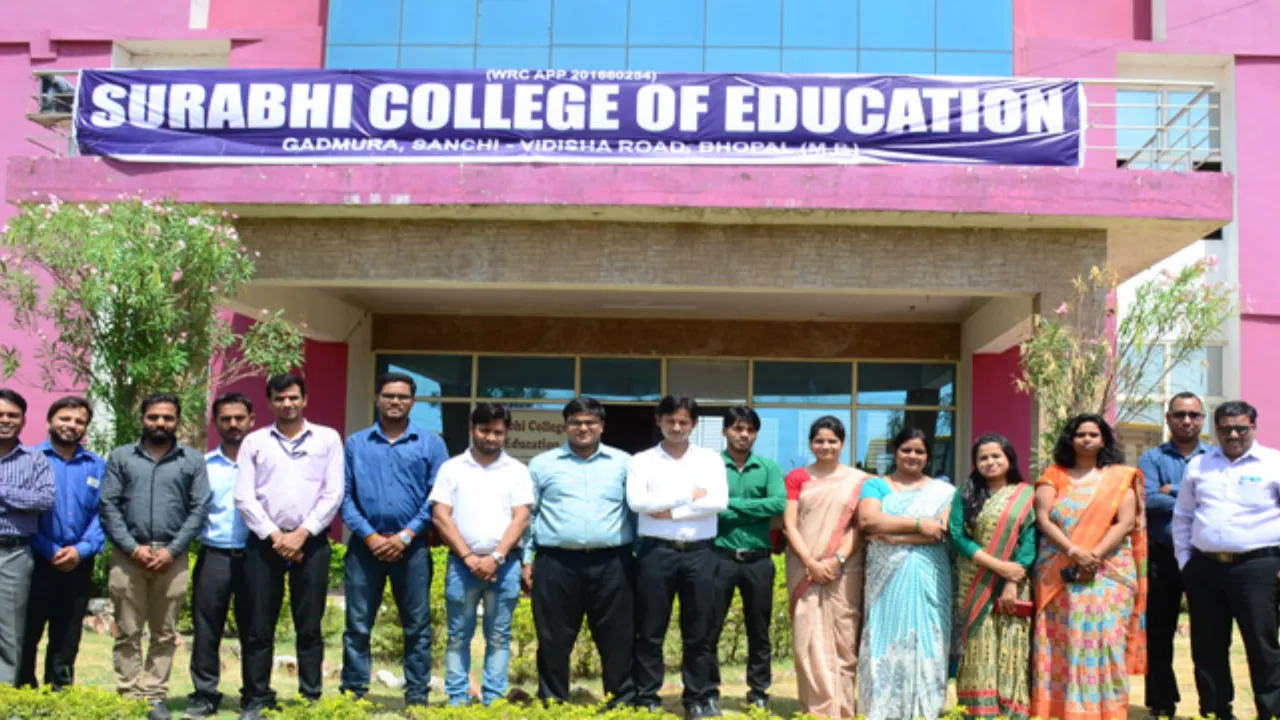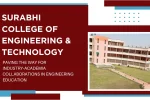How to Prepare for Surabhi College of Engineering & Technology Entrance:How to Prepare for Surabhi College of Engineering & Technology Entrance is essential for students aiming to secure a seat at SCET Bhopal. With competition increasing, you need a clear and effective game plan for entrance exams like JEE Main, CMAT, and GATE. This article outlines proven strategies to build confidence and consistency throughout your preparation journey.
Understanding SCET Bhopal admission requirements and connecting them with national-level exam preparation is key. You’ll learn step‑by‑step how to create study routines, tackle subject-wise challenges, manage time, and refine your approach through mock tests and performance analysis.
How to Prepare for Surabhi College of Engineering & Technology Entrance
Here’s where we focus on actionable steps and exam-specific strategies. This section details how to align your JEE Main strategy, CMAT tips, GATE preparation, and a potential SCET internal test, ensuring a comprehensive roadmap for success.
Overview of SCET Admission Process
| Program | Entrance Exam | Eligibility | Additional Requirements |
| B.Tech | JEE Main | 10+2 with PCM, ≥50% | Merit rank-based |
| MBA | CMAT | Graduate degree | May use grad marks |
| M.Tech | GATE | Relevant UG in Engg. | Specialization specific |
| Design/Other | SCET Aptitude Test | Varies | Check website or contact office |
I. Understanding SCET’s Admission Process
B.Tech Admissions (via JEE Main)
To gain admission for B.Tech, you must submit your JEE Main score, meet the eligibility criteria of PCM in 10+2, and secure at least 50% marks. No internal SCET internal test is required for B.Tech. Your JEE Main rank is your ticket.
MBA Admissions (via CMAT)
SCET’s MBA program evaluates CMAT scores and past academic performance. The online MBA entrance test covers six major areas including Quantitative Techniques, Reasoning, and General Awareness.
M.Tech Admissions (via GATE)
For MTech admissions, a valid GATE score is mandatory in specific engineering domains. Each specialization at SCET has distinct GATE score cutoffs—check the official admissions notice.
Design or Diploma Programs (via SCET Test)
Programs like design or art may involve an internal assessment. If you’re eyeing these, prepare for drawing, creative tasks, or general aptitude as part of the SCET internal test.
II. Preparation Strategy for Entrance Exams
A. JEE Main Strategy
1. Syllabus & Exam Pattern
Stick to foundational texts like NCERT for Physics, Chemistry, and Mathematics. Understand that JEE Main strategy revolves around MCQs and numerical questions mixed with negative marking.
2. Conceptual Clarity
Sharpen your ideas rather than memorizing. Use resources like H.C. Verma, O.P. Tandon, and R.D. Sharma to deepen your understanding.
3. Study Plan
Draw a daily timetable—divide time smartly across PCM, allot slots for revision, and avoid last-minute cramming.
4. Practice Widely
Solve diverse problems, from simple to advanced. Use JEE Main previous year papers and mock tests to get familiar with the pattern.
5. Mock Test Analysis
Implement mock test reviews religiously. Find where you lose points—was it concept weakness, silly mistakes, or timing? Fix it.
6. Healthy Lifestyle
Good sleep, balanced meals, and short breaks help reinforce learning.
B. CMAT Tips
1. Know the Pattern
The MBA entrance test includes:
- Quantitative Techniques & DI
- Logical Reasoning
- Language Comprehension
- General Awareness
- Innovation & Entrepreneurship
Understand timings and scoring to plan accordingly.
2. Sharpen Core Skills
- Quant & DI: Focus on speed and formulas.
- Logical Reasoning: Train using puzzles and pattern recognition.
- Language: Read widely; work on vocabulary and grammar.
- General Awareness: Build a habit of daily news reading.
- Innovation & Entrepreneurship: Understand core principles of startup culture and business models.
3. Create Compact Notes
Make cheat-sheets for key formulas, GK facts, and vocabulary words for quick last-minute revisions.
4. Take Mock Tests
Take CMAT online simulations. They help improve time allocation, accuracy, and reveal weak areas.
5. Time Management
Don’t get stuck. Learn to move quickly, flag tougher questions, and revisit later.
6. Review & Improve
Post-mock analysis is critical—spot errors and strategize a better approach for the next simulation.
C. GATE Preparation
1. Branch-Wise Strategy
Download the GATE preparation syllabus for your engineering stream. Highlight major and minor topics.
2. Core Topic Focus
Build depth in core subjects and General Aptitude. These two sections together form a solid scoring zone.
3. Reliable Study Material
Refer to UG textbooks, prepare short notes, or use coaching-specific materials suited to your specialization.
4. Solve Past Papers
Tackle GATE papers from the last 10 years. This helps you understand question formats—MCQ, MSQ, NAT.
5. Take Simulated Tests
Enroll in a GATE test series. After each, analyze time issues, wrong answers, and patterns of mistakes.
6. Quick Revision Guides
Maintain formula sheets, key derivations, and quick tips to aid last-minute preparation.
7. Systematic Practice
Consistent practice across topics keeps information fresh. Revise at regular intervals.
III. SCET-Specific Strategy (Internal Test, if applicable)
1. Confirm Requirements
Consult the SCET Bhopal admission page to confirm if your program needs a special test or portfolio submission.
2. Reach Out to Admissions
Call or email the admissions office to clarify:
- Internal test syllabus
- Test format (MCQ, drawing, interview)
- Weightage toward final selection
3. Aptitude & Creative Prep
- For aptitude, refresh Math and English grammar.
- For art/design programs, prepare sketches and build creative thought processes.
4. Practice Aptitude Questions
Use standard books for quantitative, verbal, and reasoning aptitude. Work on observation-based questions.
5. Portfolio & Confidence
If your chosen field requires a portfolio, ensure it highlights your best work. Prepare to discuss your creative process if there’s an interview.
Two Key Strategies to Prioritize
- Mock Test Practice with Analysis
Use mock tests not just for practice but as learning tools. Analyze every question you miss and fix the root cause. - Focused Concept Reinforcement
Regularly review weak areas and keep track of improvements. Avoid leaving gaps for exam time.
FAQs
Q1: Can I skip JEE Main for B.Tech at SCET?
A1: No. SCET typically requires JEE Main scores. Other courses may use internal audits or aptitude tests.
Q2: How does CMAT score affect my chances?
A2: CMAT score is a major criterion for SCET’s MBA selection. Strong performance directly boosts your rank.
Q3: Is GATE compulsory for all M.Tech courses?
A3: For many specializations, yes. You must check the eligibility criteria on the SCET admissions portal.
Q4: Do I need to prepare differently for SCET aptitude tests?
A4: Yes. They often test basic maths, grammar, and reasoning—sometimes including drawing skills for creative courses.
Q5: What is the best way to improve through mock tests?
A5: Use mock test analysis. Look for patterns—time pressure, revision needs, and concept clarity—and work on those.
Final Thought
A well-rounded approach to How to Prepare for Surabhi College of Engineering & Technology Entrance sets you apart. Combine your JEE Main strategy, CMAT tips, GATE preparation, and readiness for any SCET internal test, and you’ll build a compelling profile. Embrace regular mock tests, keep concepts strong, and address weak spots quickly to stay ahead.
Believe in your preparation! If you found this guide helpful, drop a comment or share it with your friends. And don’t miss our other articles—like exam timetables, subject guides, or daily motivation tips. Your next step can define your future—stay proactive, stay focused, and secure your seat at SCET!






